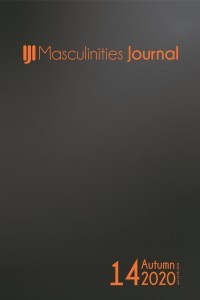Erkeklik Çalışmalarının Eksik Boyutu: Estetik, Erotik ve Varoluş
Son yıllarda kesişimsel paradigma toplumsal cinsiyet çalışmaları alanında öne çıkmaya başladı. Şüphesiz bu durum hem kadınlık ve erkeklik arasındaki hiyerarşik ve ikili ilişkileri hem de bu ilişkilerin ırksal, etnik, dini, cinsel ve diğer hiyerarşi ve ikliklerle olan bağını kavramaya yönelik önemli açılımlara sebep oldu. Buna rağmen, erkekliği hiyerarşiler ve ikilikler üzerinden analiz etmenin durumu kendini tekrar eden, otomatikleşmiş ve asıl sorunsalı olan farklılıklara ve nuanslara gerekli hassasiyeti gösteremeyen bir makineye dönüşüp dönüşmediğini sorgulamanın vakti gelmiştir. Bu doğrultuda, kesişimsel paradigmanın diğer analitik çerçevelerin de dahil edilmesiyle bütüncül bir hal alacak olması diğer ilgili boyutlara da dikkatin yönelebileceği olasılığıyla mutlaka sorgulanmalıdır. Özellikle, bu çalışmada Martin Heidegger, Michel Foucault (1971 sonrası), Roland Barthes (1971 sonrası) ve Michel Maffesoli'nin çalışmalarında da temsilinin görüldüğü, varoluşçu ve estetik düşünceden alınabilecek ilhamları/esinlenmeleri tartışmak istemekteyim. Tartışma, bu alanda 30 yıldan fazladır süren çalışmalarımdan da boyutları içerecektir.
Anahtar Kelimeler:
Toplumsal cinsiyet, kesişimsellik, estetik, erotik, varoluş
Missing from Masculinity Studies: Aesthetics, Erotics, Existence
During recent years, the intersectionalist paradigm has become prominent in gender studies. No doubt this has led to new and important insights on hierarchical and dichotomous relations between masculinity and femininity; as well as on the connections between gender hierarchies/dichotomies and racial, ethnical, religious, sexual and other hierarchies/dichotomies. However, the time has come to ask whether analysing masculinity in terms of hierarchies and dichotomies is turning into a bit of an automatic machinery, repeating itself without due respect for the diversities and nuances of the phenomena it wants to study. It must further be asked if the intersectionalist paradigm should be complemented by introducing other analytic frameworks that may help sharpen attention to other relevant aspects. In particular, I want to discuss the possible inspirations that might be taken from existential and aesthetic thinking, as represented for instance in the work of Martin Heidegger, Michel Foucault (after 1971), Roland Barthes (after 1971) and Michel Maffesoli, as well as including some aspects of my own work in the field over 30 years.
Keywords:
Gender, intersectionalism, aesthetics, erotics, existence,
___
- Benjamin, Walter. Das Passagen-Werk. 1927-1940. Frankfurt am Main: Suhrkamp, 1982. Print.
- Barthes, Roland. "Roland Barthes par Roland Barthes." 1975. ouuvres complétes Ill. Paris: Seuil, 1995. Print.
- Bech, Henning. "Mellem mænd". Kontext 45 (1983):53-67. Print . Når mænd mødes. Copenhagen: Gyldendal, 1988. Print.
- "Mandslængsel: Hankøn i moderne samfund." Dansk Sociologi 7.3 (1996), 31-46. Print
- "(Tele) Urban Eroticisms". Parallax 2 Print. . When Men Meet: Homosexuality and Modernity. Trans: Teresa Mesquit and Tim Davies. Cambridge: Polity, and Chicago: University Of Chicago Press, 1997. Print
- "A Dung Beetle in Distress: Hans Christian Andersen Meets Karl Maria Kertbeny, Geneva, 1860. Some Notes on the Archaeology Of Homosexuality and the Importance Of Tuning". Journal Of Homosexuality 35.3-4 (1998), 139-61. Print
- "Citysex: Representing Lust in Public". Theory, Culture & Society 15.34 (1998): 215-42. Print
- "After the Closet". Sexualities 2.3 (1999):243-6. Print.
- "Gendertopia: Briefe von h". Zeitschrift Fir Sexualforschung 13.3 (2000): 212-42. Print
- Gender Game". Sociologisk årbok (Yearbook Of Sociology) 17.1 "Aprés l'identité, le sexe, la sexualité, l'ethnicité, la nationalité". La sociologie compréhensive. Eds. Denis Jeffrey and Michel Maffesoli. Quebec: Les Presses de l'Université Laval, 2005.77-88. Print.
- "The Gender Game". Sociologisk årbok (Yearbook Of Sociology) 17.1 "Aprés l'identité, le sexe, la sexualité, l'ethnicité, la nationalité". La sociologie compréhensive. Eds. Denis Jeffrey and Michel Maffesoli. Quebec: Les Presses de l'Université Laval, 2005.77-88. Print.
- Kvinder og mænd. (Women and Men). Copenhagen: Hans Reitzel, 2005. Collins, Patricia. "It's All in the Family. Intersections Of Gender, Race, and Nation". Hypathia 13.3 (1998): 62-82. Print
- Connell, Robert. Masculinities. Cambridge, UK: Polity, 1995. Print.
- Crenshaw, Kimberley. "Mapping the Margins: Intersectionality, Identity Politics, and Violence against Women Of Color". Stanford Law Review 43 (1991): 1241-1279. Print.
- Foucault, Michel. L'histoire de la sexualité 2: L 'usage des plaisirs. Paris: Gallimard, 1984. Print
- Foucault, Michel. L'histoire de la sexualité 3: Le souci de soi. Paris: Gallimard, 1984. Print
- Heidegger, Martin. Sein und Zeit. 1927. Tübingen: Max Niemeyer, 1967. Print
- Katz, Jonathan N. The Invention Of Heterosexuality. New York: Dutton, 1995. Print
- Lofland, Lyn. A World of Strangers: Order and Action in Urban Public Space. New York: Basic Books, 1973. Print.
- Lykke, Nina„ "Intersektionalitet et anvåndbart begrepp for genusforskningen". Kvinnovetenskaplig tidsskrift 24.1 (2004): 47-56. Print
- Maffesoli, Michel. Le temps des tribus: Le déclin de l'individualism dans les sociétés des masses. Paris: Meridiens Klincksieck, 1988. Print Necef, Mehmet Ümit. "Islamisk chik". Mellemøst Information, Apr. 2008. Odense: Syddansk Universitet, 2008. Print.
- Rich, Adrian. "Compulsory Heterosexuality and Lesbian Existence". Signs 5 (1980): 631-60. Print.
- Rubin, Gayle. "The Traffic in Women: Notes on the 'Political Economy' Of Sex". Toward an Anthropology Of Women. Ed. Rayna Rapp. New York: Monthly Review Press, 1975.157-210. Print.
- Sandikci, Özlem, and Güliz Ger. "Aesthetics, Ethics and Politics Of the Turkish Headscarf". Clothing as Material Culture. Eds. Susanne Küchler and Daniel Miller. oxford: Berg 2005.61-82. Print
- Sedgwick, Eve. Between Men: English Literature and Male Homosexual Desire. New York: Columbia University Press, 1985. Print. Sennett, Richard. The Fall of Public Man. New York: Knopf, 1977. Print.
- Başlangıç: 2014
- Yayıncı: Eleştirel Erkeklik İncelemeleri İnisiyatifi
Sayıdaki Diğer Makaleler
"Hayır, bu herhangi başka bir aşk gibi değil": Morrissey'in Latin Fanları, Erkeklik ve Sınıf
Müzik Performansının Zevkleri ve Riskleri, Erkeklik ve Cool
Erkeklik Çalışmalarının Eksik Boyutu: Estetik, Erotik ve Varoluş
Erkekliğin Metalaştırılmasını Sorgulamaya Doğru: Deleuze'ün Kontrol Toplumu ve 'The Big Lebowski'
`Geek'lerin Yükselişi: "The Big Bang Theory"deki (2007) Eril Kimlikleri Keşfetmek
Ataerki Sadece Kadına mı Baskı Yapar: Sosyal Alanda Erkeklik ve Babalığın Rolü
